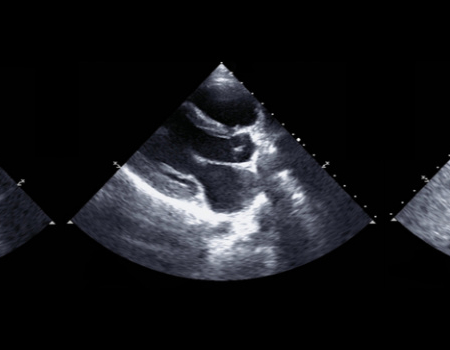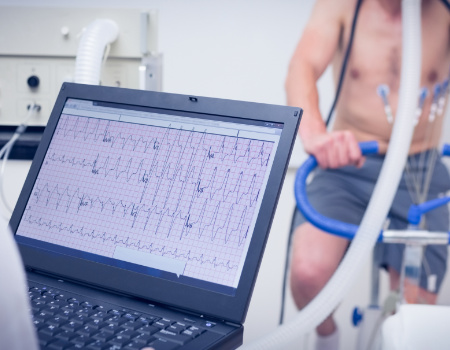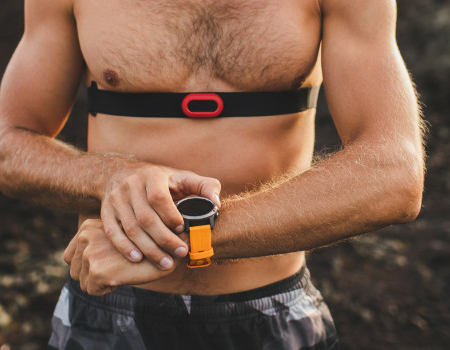Knowledge Hub
Metabolic Stress Testing Systems 101
Metabolic stress testing, also known as cardiopulmonary exercise testing (CPET), assesses how your heart, lungs, and blood vessels respond to stress. This includes how efficient they are at sending energy (oxygen) to your muscles, by measuring the levels of oxygen and carbon dioxide in your blood whilst undergoing physical exercise.
Metabolic stress testing is used for both general fitness applications and for medical applications. This test can aid diagnosis of cardiovascular and pulmonary diseases; provide pre-operative and post-surgery evaluation; and develop fields of research surrounding these areas.
Understanding Metabolic Stress Testing
How the Test Works
Metabolic stress testing involves a person undergoing physical activity for around 15 minutes whilst being monitored by a professional.
There are several different methods of conducting the test – the most popular testing methods include exercising on a bicycle ergometer or treadmill.
Indications for Metabolic Stress Testing
There are several reasons why you may undergo a metabolic stress test.
Identification of Cardiovascular and Pulmonary Diseases
Metabolic stress testing is largely used within the medical field to identify cardiovascular diseases (diseases of the heart and blood vessels), such as heart failure; as well as the identification of pulmonary diseases (relating to the lungs), such as COPD.
Assessment of Exercise Capacity and Endurance
It can also be used to determine the exercise capacity and endurance levels of those who undergo the test, such as athletes in training or rehabilitation, or those who place their bodies under extreme conditions, such as firefighters.
Diagnosis of Metabolic Disorders
Metabolic disorders, which are abnormal chemical changes taking place in the body such as diabetes, can be determined through tests such as metabolic stress testing.
Evaluation of Overall Fitness and Weight Loss Goals
Metabolic stress testing can also be used to evaluate fitness levels and determine healthy and safe weight loss goals.
Determination of Exercise Prescription for Individuals
The correct amount of exercise appropriate for a patient, athlete, or person undergoing weight loss can be determined through metabolic stress testing, to ensure the heart and lungs are able to withstand the stress.
How to Prepare for a Metabolic Stress Test
Prior to a metabolic stress test, an expert, such as a healthcare provider, advises on how to prepare for the test as well as preparing the CPET systems. This includes dietary and medical requirements, as well as what to wear on the day of the test.
Dietary requirements – it’s recommended that you don’t consume a heavy meal within two hours of your test, and avoid drinking alcohol within four hours of your test.
Medical and medication-related precautions – take medication as normal and bring any rescue medication (such as inhalers and nitrolingual spray) to your test appointment if necessary.
Clothing and equipment requirements – you should wear comfortable clothing and shoes appropriate for exercise.
What to Expect During a Metabolic Stress Test
During a metabolic stress test appointment, the person undergoing the test will firstly be monitored at rest. This includes a professional measuring the resting blood pressure and heart rate and rhythm, as well as conducting a breathing test, of the recipient.
The test will then begin, where the recipient will exercise on a bicycle or treadmill. Measurements of blood pressure, heart rate and rhythm, breathing, and oxygen levels will again be taken during this. To do this, the person undergoing the test will wear a mouthpiece or face mask; have an ECG attached to their chest; a blood pressure monitor cuff on their upper arm; and a pulse oximeter on their finger.
Finally, the recipient will be monitored in the same way whilst recovering from exercise. The test in total lasts around 90 minutes.
The potential side effects and risks of the metabolic stress test are minimal, with the risks sitting at the same rate as mild to moderate exercise. Symptoms may include: fainting, shortness of breath, dizziness, and a change in heart rhythm; more extreme complications are rare. However, the recipient will be evaluated by a healthcare professional throughout the test to ensure that they don’t experience adverse reactions.
Interpreting the Results of a Metabolic Stress Test
Once the results of the test have been finalised, a healthcare provider or consultant will then be able to discuss the results with their patient. They will explain various measurements, as well as the parameters of normal and abnormal results.
Abnormal measurements may be caused by:
- Abnormal heart beat and rhythms
- Abnormal changes in your ECG reading
- Poor oxygenation capacity
This can occur both whilst undergoing physical activity and at rest and can indicate further health problems. Next steps will be discussed.
Limitations and Considerations of Metabolic Stress Testing
As with all testing systems, there are limitations and considerations which will be discussed with the person undergoing the test by the clinician.
Some instances where accuracy can be affected include:
- The person undergoing the test does not follow instructions before and during the test
- The professional providing the test does not perform to the expected and necessary standard, including briefing the patient and recording measurements
- If equipment is not properly prepared, maintained or serviced
There are also potential limitations to the test depending on specific populations. For instance, obese, disabled, physically impaired, and elderly people may not be able to safely perform the test. In these instances, the clinician may adapt the test, such as using a different type of bike or an arm crank.
The metabolic stress test is a largely reliable and popular medium for monitoring the cardiovascular and pulmonary performance for both fitness and medical applications. Whilst this guide provides a general overview of the test and its limitations, a healthcare provider should always be consulted for the latest professional advice.
Related Articles
Discover more expert guides
Speak to the experts
Got a question?


